-
A Backyard Habitat Case Study
2025-11-24
-
Adopt a Watery Spot
2025-11-24
Ponds, swamps, and streams are all too often used as dumps. Such illegal dumping poses serious hazards to wildlife.
-
Alien Alert!
2025-11-24
Alien species are plants or animals that don’t originate from an area where they’re now established. Usually, these uninvited visitors arrive in Canada as a direct or indirect result of human activities.
-
Backyard Habitat
2025-11-24
-

Banish Unwanted Weeds and Bugs
2025-11-24
Make your backyard habitat a healthier place for wildlife. Use safe alternatives to chemical pesticides.
-

Be a Piping Plover Guardian
2025-11-24
In the Atlantic provinces, the Piping Plover Guardian Program relies on about 120 volunteers to patrol 40 nesting beaches during critical breeding periods.
-
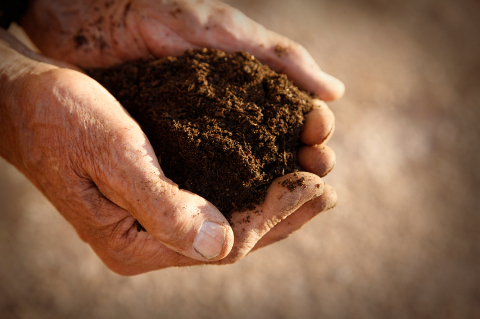
Boost Backyard Biodiversity
2025-11-24
Nearly everyone admires songbirds, sea turtles, and flying squirrels. But we also need to appreciate the vital roles played by algae, bacteria, fungi, and tiny invertebrates.
-

Build a Multi-unit Dwelling for Purple Martins
2025-11-24
Condominium living isn’t for every bird, but purple martins like it just fine. Our largest swallows, these dark purplish-blue winged acrobats will return to the same multi-unit nesting structure year after year.
-
Build an Amphibian Pond
2025-11-24
Frogs are often so hard-pressed for water that they choose unsafe places - such as swimming pools - as living quarters.
-
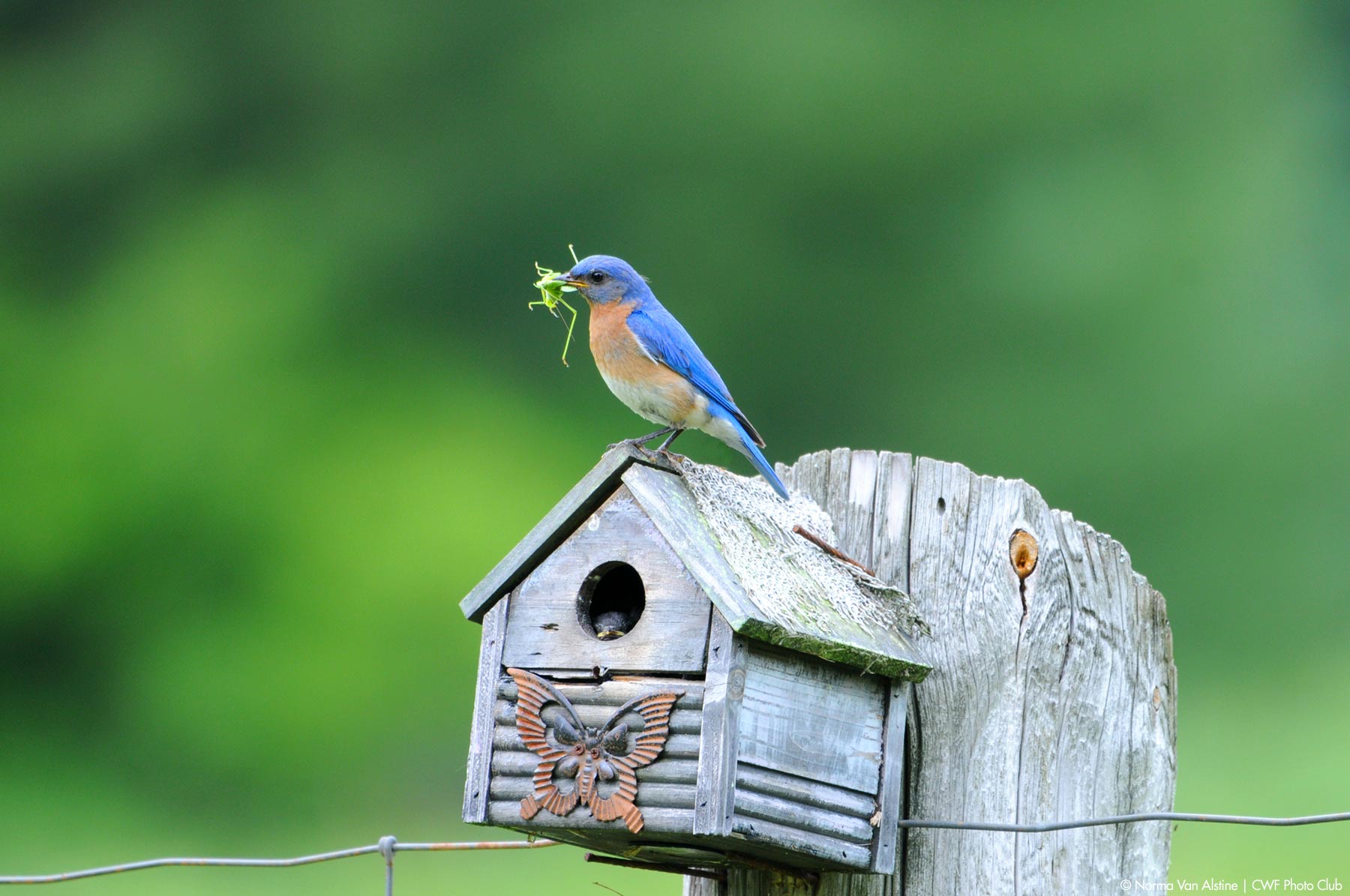
Build and Maintain Nesting and Roosting Boxes
2025-11-24
There's a serious shortage of accommodations in the bird world these days. About 24 Canadian bird species nest in natural cavities such as holes in decaying trees and stumps, but it's getting harder for them to find lodgings.
-
-
Build Brush and Rock Piles
2025-11-24
Wildlife will appreciate brush and rock piles - handy hiding places (near a feeder, for example) where small birds and mammals can flee for cover - just about anywhere.
-
Build Brush Bundles for Fish
2025-11-24
Brush bundles are stacks of cut undergrowth that vary in size and design, and an effective source of cover for various types of fish.
-
Build Nesting Platforms for Ferruginous Hawks
2025-11-24
North America's largest hawk can no longer be found in many parts of the Prairies, where it was formerly common.
-
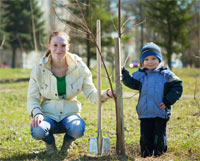
-
Choose the Perfect Planting Arrangement
2025-11-24
Many kinds of planting arrangements are guaranteed drawing cards for wildlife.
-
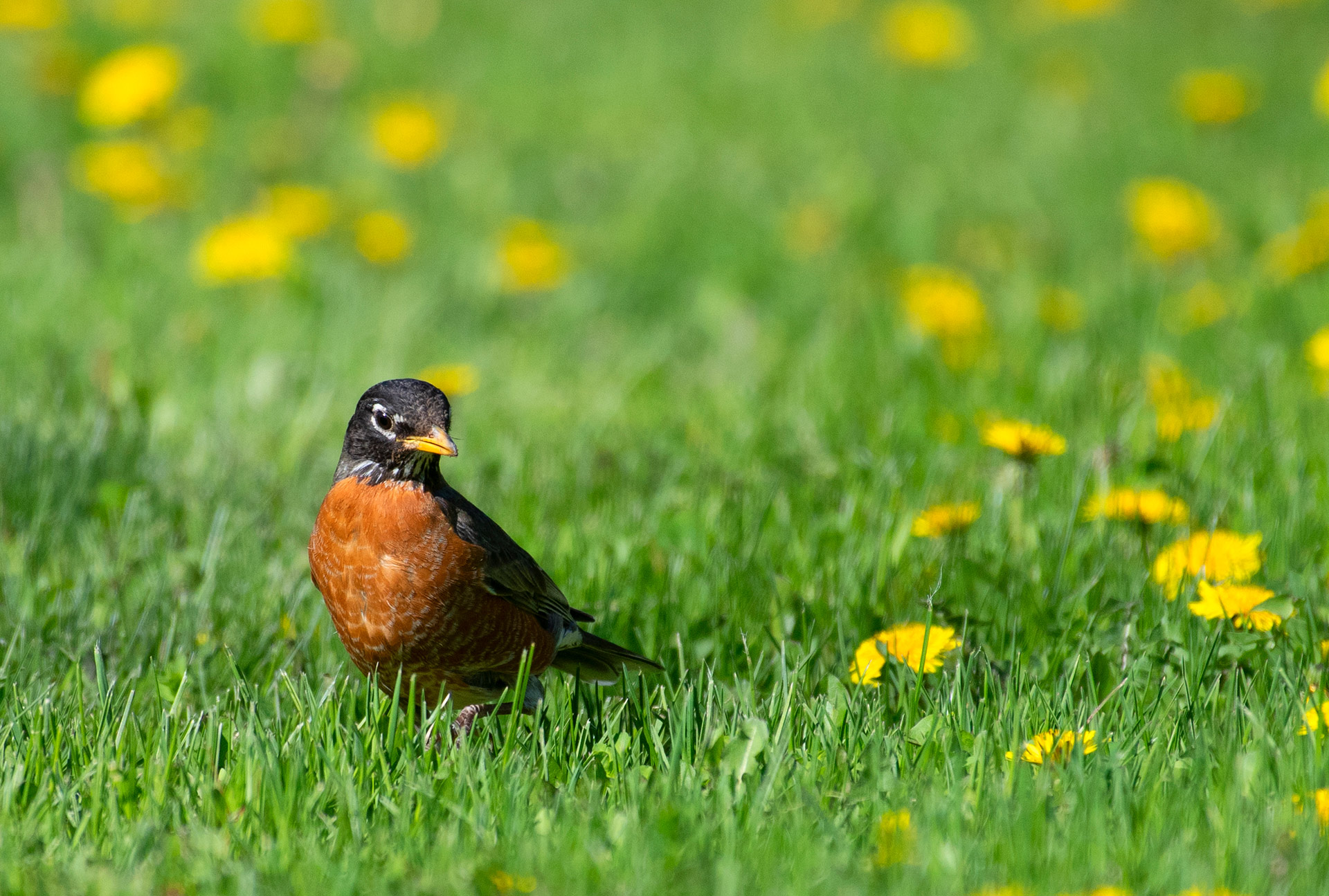
Choose Wildlife-friendly Lawn Care
2025-11-24
One effective and easy way to help wildlife is to change your lawn care practices. Even if you choose just one of the suggestions listed below, both wildlife and humans will benefit.
-
Clean up Your Local Garbage Dump
2025-11-24
The ways in which we dispose of garbage can seriously damage water, as well as the wildlife species that depend on that water.
-
Combat Dumping on Shores and in Marine Habitats
2025-11-24
You may not think anything could get in this giant's way, but common plastic debris is causing leatherbacks terrible trouble.
-
Come to Terms with Squirrels
2025-11-24
Grey or black squirrels are a common sight in urban and suburban backyards.
-
Compost Leaves for Your Backyard Habitat
2025-11-24
You may be surprised to learn that composted leaves can make a mineral-rich fertilizer or mulch for your garden. It couldn't be easier.
-
Compost With Worms
2025-11-24
No matter where you live, there's a way you can compost to reduce waste, and you can do it year-round, right in your home, using worms!
-
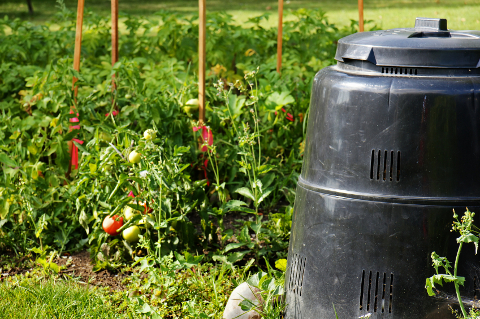
Compost Your Garbage
2025-11-24
Why not try composting your trash? You will reduce the amount of garbage you put out on the curb, and provide your backyard with rich, natural fertilizer - at no cost!
-
-
Conserve the Carolinian Life Zone
2025-11-24
The amazing Carolinian Life Zone in southwestern Ontario boasts a greater variety of wildlife than any other ecosystem in Canada.
-
Cope With Bird Collisions
2025-11-24
If you find a bird that has collided with a window, here’s how you can help:
-
Create a Clump or Thicket
2025-11-24
Clumps (clusters of trees) and thickets (dense bushes) provide important edge habitat for wildlife.
-
Create a Simple Bat Roost
2025-11-24
Bats are important for biodiversity and are an excellent form of pest control. A single big brown bat can eat as many as 7,000 insects a night.
-
Create Block Plantings
2025-11-24
Block plantings are several rows of trees and shrubs planted parallel to each other. They are especially appropriate for backyards prone to erosion problems.
-

Create Toad Homes
2025-11-24
Toads feed on insects and other invertebrates. They're particularly fond of slugs, sowbugs, earwigs, cutworms, and gypsy moths. In fact, nearly 90 percent of a toad's diet consists of garden pests.
-
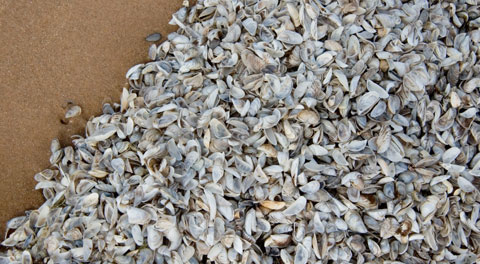
Curb the Spread of Zebra Mussels
2025-11-24
Since 1988, zebra mussels have been spreading rapidly through the Great Lakes, clogging water pipes and smothering fish spawning grounds.
-
Develop an Action Plan
2025-11-24
A strong backyard action plan will make it easier for you to circumnavigate the pitfalls, and frustrating foul-ups that might tempt you to abandon your project. The following checklist gives a handy overview of elements you should consider as you develop your backyard habitat action plan.
-
Develop an Urban Forest Policy
2025-11-24
Knowledge is power. The more people are aware of problems facing wildlife, the more likely they are to take action. Why not encourage your community to develop an urban forest policy?
-

Discover How a Tree Provides Benefits for Wildlife
2025-11-24
Considering the valuable work that trees do for this planet, every one of them should get a medal. Aside from providing shelter and food for all sorts of wildlife, from fungus and beetles to mice and moose, trees contribute to a clean, healthy environment.
-
Do a Simple Soil Test
2025-11-24
Maybe all you have to work with is sand, gravel, or heavy clay. While the challenge is greater, certain plants will still thrive.
-
Down-in-the-dumps Checklist
2025-11-24
The following checklist will help you determine if your municipal dump poses an environmental threat:
-
Educate Your Community
2025-11-24
Almost everyone is interested in wildlife, but most of us know little about why many wild species are at risk, or how we can help. You'll provide a much-needed service by educating your community about imperilled wildlife.
-
Fix up a Fence Row
2025-11-24
A fence row is any fenced border around a lot. Whether it's used for privacy or to keep pets out of trouble with neighbours, a fence row is a great place to plant for wildlife.
-
Foster Old-growth Forests and Rainforests
2025-11-24
Many creatures can only survive in very particular habitats.
-
Get Community Projects Up and Running
2025-11-24
Community projects geared to improving habitat can be challenging and fun, and they’re hugely rewarding for humans and wildlife.
-
Get Rid of Rats
2025-11-24
One of the most common and troublesome rodents is the Norway rat (Rattus norvegicus). This alarmingly adaptable species is found worldwide in basements, sewers, dumps, and buildings of all kinds. It dives and swims well and is at home in cities, towns, and villages.
-
Getting Started
2025-11-24
If you want to help wildlife, you’re one of thousands of Canadians concerned about our disappearing natural heritage. You can start right now, and take the first steps in your own backyard!
-
Get to Know Your Backyard
2025-11-24
If you want to help local wildlife, it is important to view your backyard from a perspective that takes wildlife needs into account.
-
Give First Aid to Insect-infested Trees
2025-11-24
Every year, we lose millions of hectares of trees to insects and disease. A loss of trees means a loss of wildlife habitat too.
-
Give Loons a Lift
2025-11-24
When any species - even a common one - changes its habits, there is reason to suspect that all is not well. The common loon, which is found throughout Canada, is not endangered - yet - but shoreline developments continue to destroy nesting sites, and recreational activities can seriously disrupt both adults and chicks.
-

Give Toads a Winter Residence
2025-11-24
While frogs are happy to pass the winter at the bottom of a pond, toads are terrestrial hibernators: they'll dig deep into soft garden soil, beneath the frost line, to spend the long, freezing months in dormancy.
-
Give Wildlife an Edge
2025-11-24
If you want to be a hit with wildlife, plant edges on your property. They are a great example of biodiversity in action and attract an amazing array of beneficial creatures to your backyard.
-
Habitat Planning Checklist
2025-11-24
The following checklist will steer you toward the basic steps to take in any habitat improvement effort.
-
Help the Burrowing Owl Recover
2025-11-24
Once common on the Prairie grasslands, the burrowing owl is now listed as endangered by the Committee on the Status of Endangered Wildlife in Canada.
-
Honour a Habitat Hero
2025-11-24
Knowing that others acknowledge and respect their efforts encourages people to continue conservation projects, and even start new ones.
-
How to Obtain Shrub Cuttings
2025-11-24
Cuttings taken from local shrubs and transplanted to your backyard are better adapted to conditions in your area and will also save you money.
-
How to Organize a Community Project
2025-11-24
A project of this nature can be a great focus for service clubs, women’s institutes, naturalist or youth groups, or the families on your block.
-
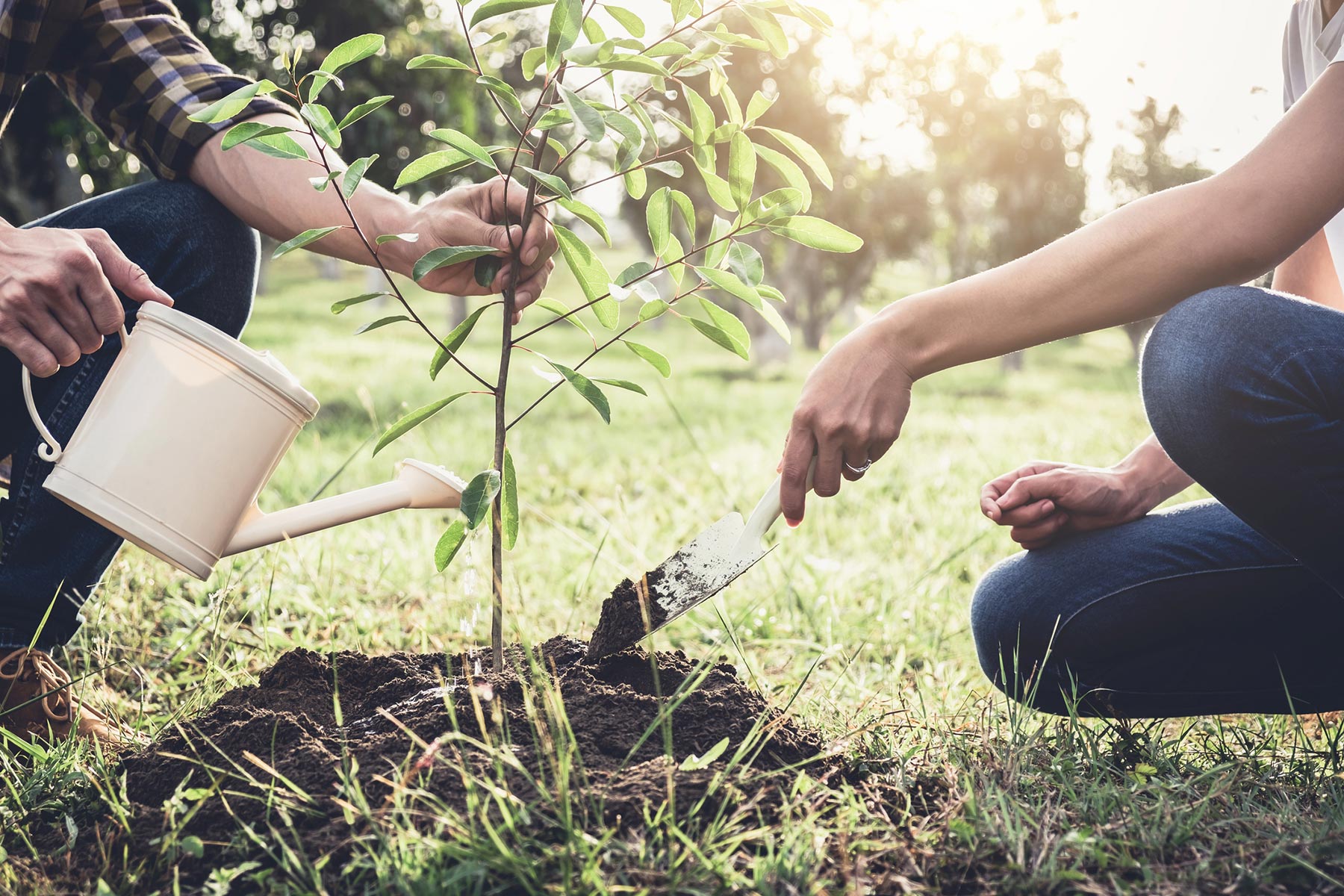
How to Plant Trees and Shrubs for Wildlife
2025-11-24
One of the simplest and most effective ways to attract wildlife to your backyard is to plant native trees and shrubs. But, remember - moving day is a shock for seedlings and saplings. Make sure trees and shrubs get a healthy start on your property.
-
-
Improve a Nature Trail
2025-11-24
Trails provide all kinds of benefits for wildlife and humans alike.
-
Install Birdbaths
2025-11-24
A birdbath in your backyard can attract everything from songbirds to small mammals, reptiles, amphibians, and insects.
-
Join Forces with Other Groups
2025-11-24
This is a great way to educate your community about wildlife issues share ideas and experiences, and even make valuable contacts!
-
Keep on Diversifying
2025-11-24
-
Keep Track of the Benefits of Your Project
2025-11-24
Are you still not convinced that your planting projects will make a difference for wildlife? Revisit the following checklist from time to time. It will remind you of all the benefits that working for wildlife brings.
-
Let Grass Grow on the Riverbanks
2025-11-24
Many waterfront dwellers cut their grass right to the water’s edge, unaware that they’re eliminating important wildlife habitat. In many cases, however, landowners are willing to change their ways once they know the facts.
-
Let Succession Work for Wildlife
2025-11-24
Succession is what happens when, over many years, one type of habitat changes gradually and naturally into another. As certain plant species are replaced by others, succession turns an abandoned lot into a small forest.
-
Maintenance Tips for Building Projects
2025-11-24
A vital part of any wildlife habitat building project is maintenance. You can't just dig an amphibian pond or hang a nesting box in a tree and leave nature to do the rest!
-
Make a Dusting Spot for Birds
2025-11-24
Have you ever seen wrens or sparrows creating miniature dust storms? They love to squat in loose, fine soil and fluff their feathers furiously.
-
Make a Log Pile Habitat
2025-11-24
A simple log pile habitat is an easy way to attract a diversity of wildlife to your backyard, and a great project to try out - even if you're working with limited space.
-

Make an Urban Wildlife Plan
2025-11-24
Wildlife planning is an essential part of urban planning. If it isn’t practised in your community, maybe you can help introduce it.
-
Make a Soggy Spot for Butterflies
2025-11-24
Butterflies absorb the mineral salts they need from moist sand or mud. You can easily make a special soggy spot or two in your backyard for butterflies.
-
Make Peace with Yellow Jackets
2025-11-24
These wasps often arrive by the dozen (and without an invitation) at picnics and barbecues.
-
-
Other Housing Suggestions for Purple Martins
2025-11-24
Some people have luck attracting martins with hollowed-out gourds.
-
Pamper Your Lawn With Free Fertilizer
2025-11-24
Several decades ago, many homeowners got into the habit of collecting their grass clippings and sending them off to landfill sites.
-
Pigeon-Proof Your Home and Backyard
2025-11-24
Pigeons proliferate in urban centres, where their droppings can deface buildings, clog drainpipes, kill lawns and vegetation, and attract fleas, ticks, and mites.
-
Plant a Downtown Edge
2025-11-24
Even in a paved city lot with scant space, you can create habitats that attract insects, birds, and small mammals.
-
Plant a Fruit-bearing Hedgerow
2025-11-24
A fruit-bearing hedgerow is a row of thick, bushy plants that provides wildlife with shelter and a passageway to get from place to place - preferably with snacks along the way.
-
Plant an Edge
2025-11-24
An edge is where one type of habitat meets and blends with another and the two merging habitats create a distinct third edge habitat. Different species of wildlife thrive in each of these environments.
-
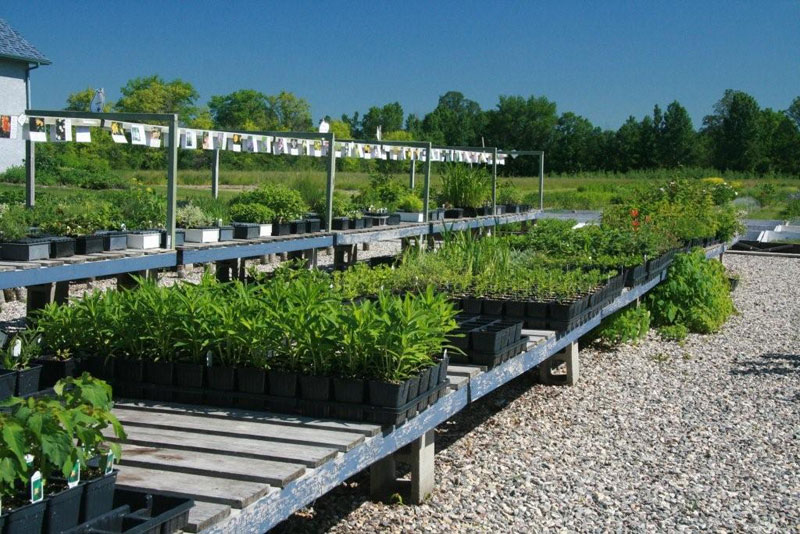
Plant a Patch of Prairie Grass
2025-11-24
The Prairie Grasslands Region is one of the most endangered habitats in Canada, but grasslands aren't found only in the Prairie provinces. There are patches of them in Ontario.
-
Plant a Wild Alternative to a Lawn
2025-11-24
Besides offering a wonderful fragrance and a breathtaking sight, a native wildflower meadow is a magnet for wildlife.
-
Plant Easy-to-grow Willows
2025-11-24
Willow trees are easy to grow, even in the North where the growing season is short and the soil is often barren and sandy.
-
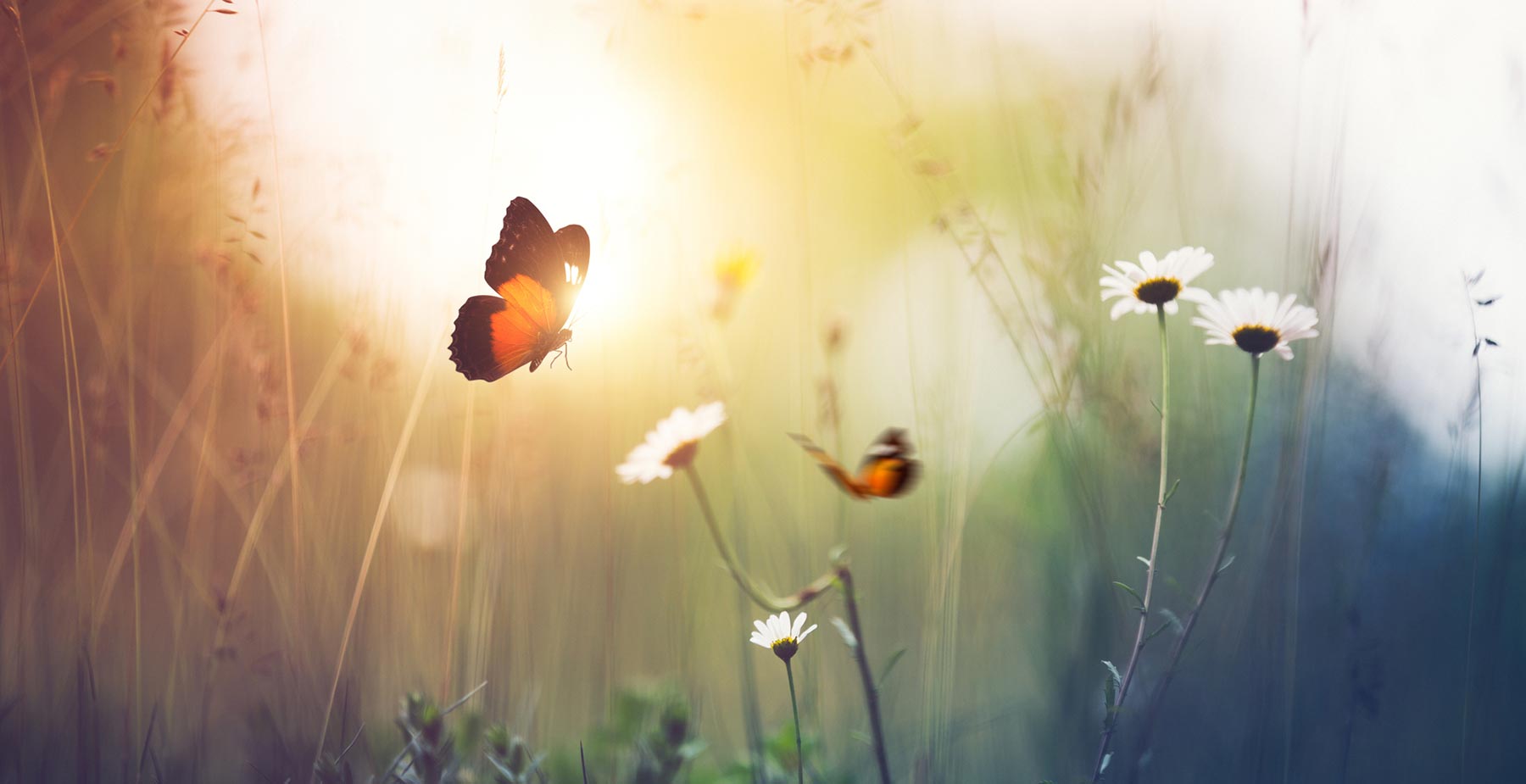
Plant for Bees, Butterflies, and Other Pollinators
2025-11-24
Habitat loss, pesticide use, and pollution are endangering bees and butterflies across Canada. The decline of these busy pollinators puts some major food crops and flowers in danger too.
-

Plant for Hummingbirds
2025-11-24
Hummingbirds have a special affinity for the colour red. They are also partial to tubular or trumpet-shaped flowers. You can enhance habitat for these intriguing birds by planting a garden that meets their particular needs.
-
Plant for Insects
2025-11-24
When we plan a wildlife refuge, we often neglect unpopular creatures such as bees, spiders, and wasps. We have a habit of either gassing these creatures with bug spray or pounding the life out of them with rolled-up newspapers.
-
-
Plant Project Maintenance Tips
2025-11-24
A little maintenance goes a long way in any planting project. Cleaning up an area, removing competing vegetation, and making water available will ensure that your project provides lasting benefits to wildlife.
-
Plants for All Seasons
2025-11-24
Keep the four seasons - especially winter - in mind when you plant for wildlife. When snowdrifts pile up and the ground is frozen, many creatures count on fruit- and nut-bearing plants for their survival.
-
Plant to Control Erosion along Waterways
2025-11-24
The vegetation growing along our rivers and streams is vital to watery habitats. Besides providing food and shelter for wildlife, its shade cools the water in summer to just the right temperature for aquatic creatures.
-
Plant to Stop Erosion in Sloping Areas
2025-11-24
When you cover sloping areas with vegetation that is attractive to wildlife, you also help to prevent soil erosion. Plants protect the earth from elements like strong winds and rain.
-
Proclaim National Wildlife Week
2025-11-24
Does your municipality declare National Wildlife Week each year? It should! National Wildlife Week is a great way to increase community awareness of wildlife and habitat conservation.
-
Protect a Fallen Log Habitat
2025-11-24
If a tree in your backyard is dying and must be removed, try to save at least part of it for wildlife.
-
Protect a Local Habitat
2025-11-24
Some habitats that need a helping hand are quite small. For Most North American colonies range in size from a dozen to 300 plants. In the past 60 years, this particular colony has spread from just a handful of plants to about 16,000!
-
Protect a Small Migration
2025-11-24
We disturb a lot of plants and animals with our busy building projects.
-
Protect a Snag Tree
2025-11-24
Decaying or dead trees are known as snags, and are wildlife wonderlands! Snags are used by insects, birds, mammals, and amphibians as sites for perching, resting, roosting, feeding, grooming, hibernating, courting, and laying eggs.
-

Protect Our Waters from Hazardous Waste
2025-11-24
Toxic chemicals, such as solvents, cleaners, and darkroom chemicals, are often dumped down drains because people don't know what else to do with them. A great community service project would be to organize a day for these substances to be safely disposed of.
-
Protect Seashores
2025-11-24
Seashores are habitats for numerous species of plants and animals, and are a haven for migratory birds as well. It is important to treat these areas with respect.
-
Protect Your Community's Greenery
2025-11-24
During construction, vegetation is usually removed. With a little care, trees on construction sites can be saved or replanted for the benefit of wildlife and people.
-
Provide a Backyard Feeding Station for Birds
2025-11-24
In winter, when food is scarce, birds need more energy than usual to keep warm. A feeding station that provides nutritious food for hungry birds is like an oasis in the bleak cold.
-
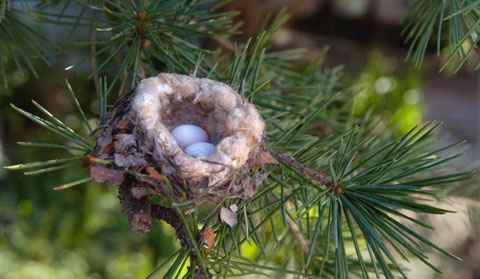
Provide Nesting Materials for Backyard Birds
2025-11-24
In spring, many birds are on the lookout for materials to build their nests.
-
Publicize Your Project
2025-11-24
If you or your group is working to help wildlife: Tell everybody; the more people who know about your efforts, the better.
-
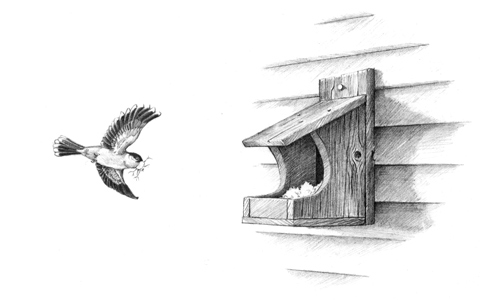
Put up Nesting Shelves
2025-11-24
Although some birds, like American robins, barn swallows, and eastern phoebes, won’t nest in boxes, they’ll gladly accept nesting shelves mounted on trees or tucked under the overhanging eaves of your home.
-
Quick Problem Checklist
2025-11-24
Here are some simple solutions to typical backyard habitat problems.
-
Reclaim a Railway Corridor
2025-11-24
Trains aren’t as common as they used to be, and many communities now have abandoned railway corridors. If there’s one in your community, find out if you can adopt at least part of it and turn it into a “greenway” instead of a railway.
-
Reclaim Compacted Soil
2025-11-24
Soil compaction around trees is a serious and persistent problem. It can happen when the earth is compressed by vehicle treads and foot traffic.
-

Rehabilitate a Salmon Stream
2025-11-24
Salmon were once so numerous that people thought they would last forever. Today, after years of overfishing, pollution, and destruction of freshwater habitat, salmon stocks have been seriously depleted.
-
Repair a Riparian Zone
2025-11-24
The edges of our wetlands and waterways are called riparian zones. These range from narrow strips of sparse vegetation to wide bands of green growth. They buffer watery areas against influences like sun, wind, pollution, and noisy vehicle traffic.
-
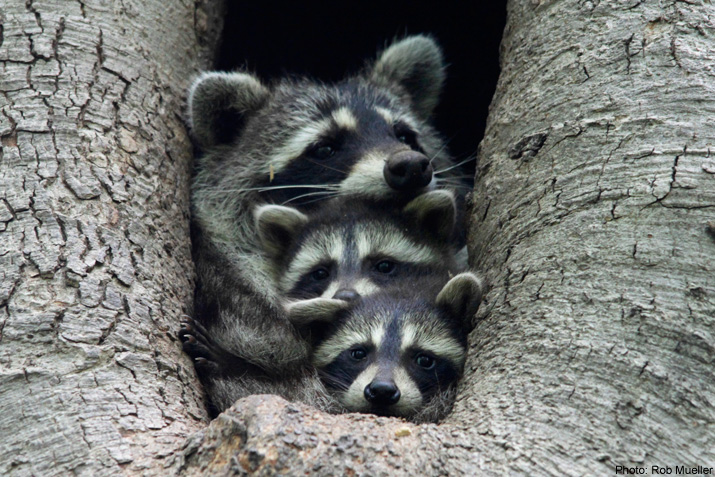
Repel Rascally Raccoons
2025-11-24
Raccoons are very comfortable living near people. In Ontario cities, there are usually eight to 16 of these mammals per square kilometre. In some areas, that number is as high as 85!
-
Restore a Native Plant Site
2025-11-24
You can restore a site to its original condition or protect an area that's already a native plant community. In doing so, you'll perpetuate our natural heritage and ensure that indigenous species thrive.
-
Restore Balance to Your Backyard Habitat
2025-11-24
When we disrupt habitat and the natural balance of an ecosystem, the inevitable result is a clash between humans and wildlife.
-

Rivers, Lakes, and Streams
2025-11-24
Think of rivers, lakes, and streams, as the blood vessels of the Earth. They carry nutrients from one part of the planet to another; in doing this they wash out toxins and return life-giving oxygen into the system.
-

Root out Purple Loosestrife
2025-11-24
Purple loosestrife is a strikingly beautiful wildflower that was brought to North America in the early 1800s.
-
Save B.C.’s Richest Habitat
2025-11-24
The South Okanagan and Lower Similkameen area is out of this world! Unfortunately, it's also one of Canada's four most endangered habitats, alongside the Garry Oak meadows of Vancouver Island, the tall-grass prairies of Manitoba and Ontario, and the of southwestern Ontario.
-
Spruce up an Old Windbreak
2025-11-24
It's a shame to let an established windbreak fall into disrepair. Windbreaks are wildlife havens.
-
Stand by an Amphibian
2025-11-24
Some creatures serve as an early warning system for environmental trouble; these are considered indicator species by scientists. Consider amphibians, for example.
-
-
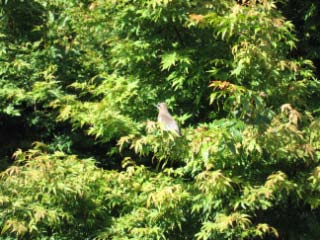
Start a Windbreak
2025-11-24
If you have a large lot and plenty of get-up-and-go, this may be the perfect project for you. A windbreak is like a giant hedge made up of trees and shrubs growing one to five rows wide. It can make a great travel lane for small wild animals and provide them with food and cover.
-
Subdue Snails and Slugs
2025-11-24
Slugs and snails are extremely fond of most tender young plants, and can easily destroy entire plantings, leaving behind a wake of ragged and chewed foliage.
-
Support Canada's Conservation Data Centres
2025-11-24
-
Take Migratory Birds Under Your Wing
2025-11-24
Most birds migrate at night, and the big cities along their migration routes can be like obstacle courses. Feathered travellers can be befuddled and thrown off course by the dazzling lights of buildings and towers and crash into windows or flutter against them until they drop from exhaustion.
-
The Importance of Diversity
2025-11-24
A habitat that attracts lots of birds, bugs, and beasts is not necessarily neat and tidy. Land that brings a lot of species flocking, hopping, slithering, bounding, and flying is pretty messy, and natural mess is a far cry from the human-made litter of paper, broken glass, tires, and other debris we often see in our communities.
-
The Importance of Plants
2025-11-24
One of the most important elements needed to attract wildlife to your property is vegetation. Plants are a major source of shelter and food for countless wild species. Don't forget: Plants are wildlife too. When making your site plan we recommend that you develop habitat with a variety of wildlife in mind, rather than just one or two species.
-
Tips for Better Composting
2025-11-24
Turn the compost periodically with a pitchfork to speed up the process. Don't panic if you are unable to do this; the pile will still eventually become "rich" soil - ready for use in your backyard habitat.
-
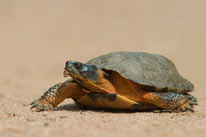
-
Uncover a Seep
2025-11-24
A seep is a wet spot on a hillside. Although you may not see any water, the earth will be moist, and there will be sedges, rushes, or cattails growing there.
-
Underground Sponges
2025-11-24
You might be surprised to learn that two-thirds of the world's freshwater gurgles, trickles, and seeps underground. Even in Canada, there is more freshwater underground than on the surface.
-
Use Trees and Plants to Boost Biodiversity
2025-11-24
To help wildlife, we must look after Canada's biodiversity. One great way to do that is to protect plants.
-
Welcome Migratory Birds and Insects
2025-11-24
Whenever a species moves from one place to another as the seasons change, it is migrating.
-
Welcome Wildlife to Cities
2025-11-24
Did you know that a wildlife welcoming revolution is going on in many Canadian cities?
-
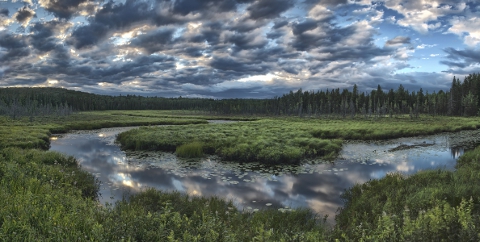
Wetlands
2025-11-24
A wetland is any area of land that is covered with water for at least part of the year. In Canada, we have freshwater and saltwater wetlands, all of them teeming with wildlife.
-
What is Wildlife?
2025-11-24
It is important to understand that wild species and the habitat where they live are inseparable. When habitat is damaged or destroyed, the inevitable result is the destruction of wildlife.
-
Why Should We Build for Wildlife
2025-11-24
As humans continue to build cities, towns, and suburbs, more and more wild creatures become homeless.
-
Why Should We Conserve Special Habitats?
2025-11-24
If we allow Canada’s diverse habitats to disappear one by one, we’ll lose a wealth of wildlife, and that loss could be catastrophic.
-
Why Should We Conserve Special Species?
2025-11-24
Species recovery calls for time, money, expertise, and a lot of effort and teamwork. Luckily, we have encouraging news.
-
Why Should We Plant for Wildlife?
2025-11-24
We have a lot to lose if we allow our green heritage to decline, and so does wildlife.
-
You're an Ecosystem Steward
2025-11-24
-
You're Boosting Biodiversity
2025-11-24
-
You're Building a Sustainable Society
2025-11-24
-
Your Backyard and Your Community
2025-11-24
You could say that the place where you live is your habitat. There, you have the food, shelter, water, and space you need to be born, grow up healthy, earn a living, choose a mate, raise a family, and ultimately die. Your individual habitat is also part of a much larger human community, and all members of that community are dependent upon each other to live.
